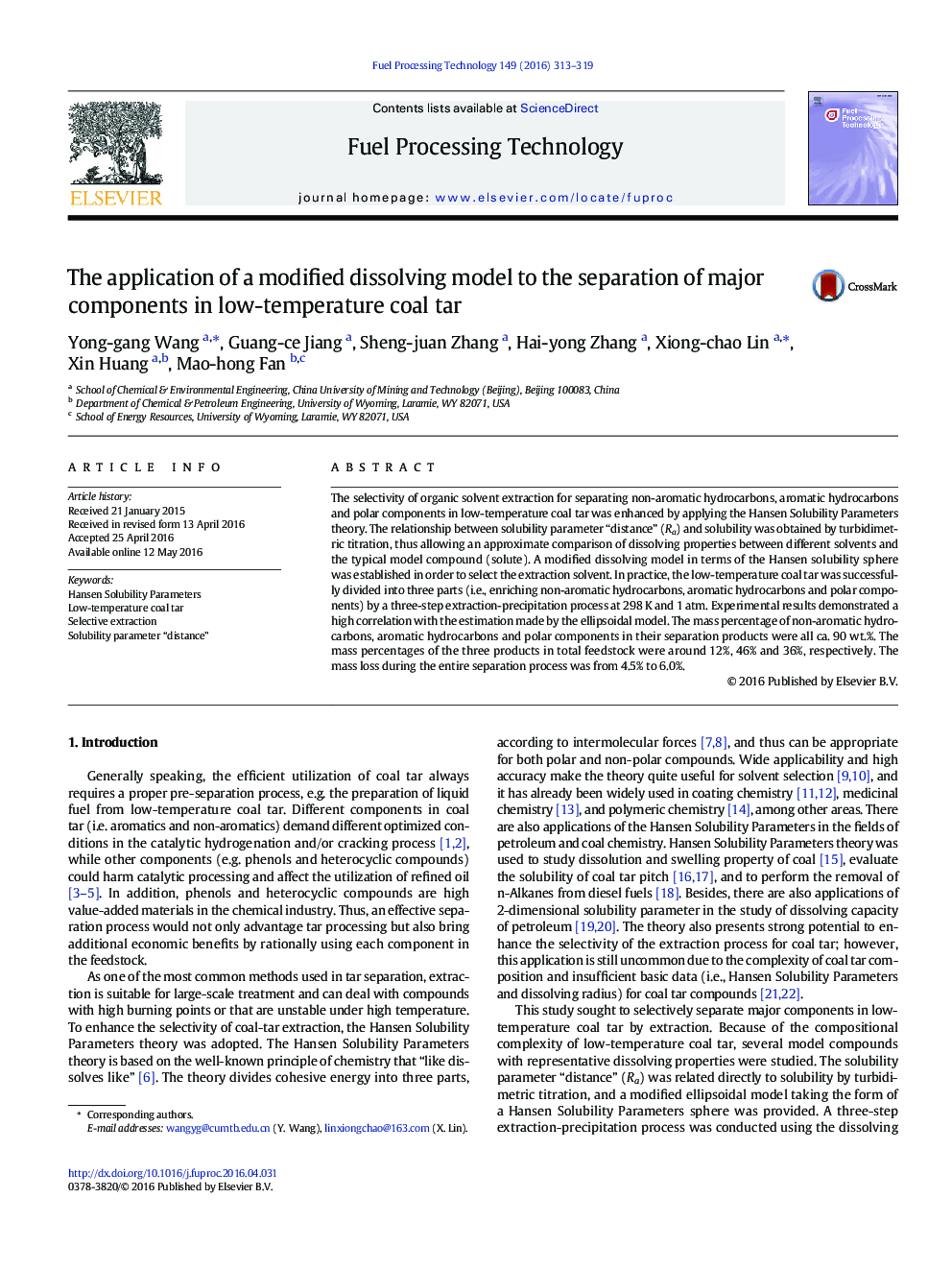| Article ID | Journal | Published Year | Pages | File Type |
|---|---|---|---|---|
| 209177 | Fuel Processing Technology | 2016 | 7 Pages |
•Solubility was related to the solubility parameter distance “Ra″.•A new ellipsoidal model was proposed for solvent selection.•Coal tar was selectively separated in to 3 parts basing on polarity.
The selectivity of organic solvent extraction for separating non-aromatic hydrocarbons, aromatic hydrocarbons and polar components in low-temperature coal tar was enhanced by applying the Hansen Solubility Parameters theory. The relationship between solubility parameter “distance” (Ra) and solubility was obtained by turbidimetric titration, thus allowing an approximate comparison of dissolving properties between different solvents and the typical model compound (solute). A modified dissolving model in terms of the Hansen solubility sphere was established in order to select the extraction solvent. In practice, the low-temperature coal tar was successfully divided into three parts (i.e., enriching non-aromatic hydrocarbons, aromatic hydrocarbons and polar components) by a three-step extraction-precipitation process at 298 K and 1 atm. Experimental results demonstrated a high correlation with the estimation made by the ellipsoidal model. The mass percentage of non-aromatic hydrocarbons, aromatic hydrocarbons and polar components in their separation products were all ca. 90 wt.%. The mass percentages of the three products in total feedstock were around 12%, 46% and 36%, respectively. The mass loss during the entire separation process was from 4.5% to 6.0%.
Graphical abstractFigure optionsDownload full-size imageDownload as PowerPoint slide
